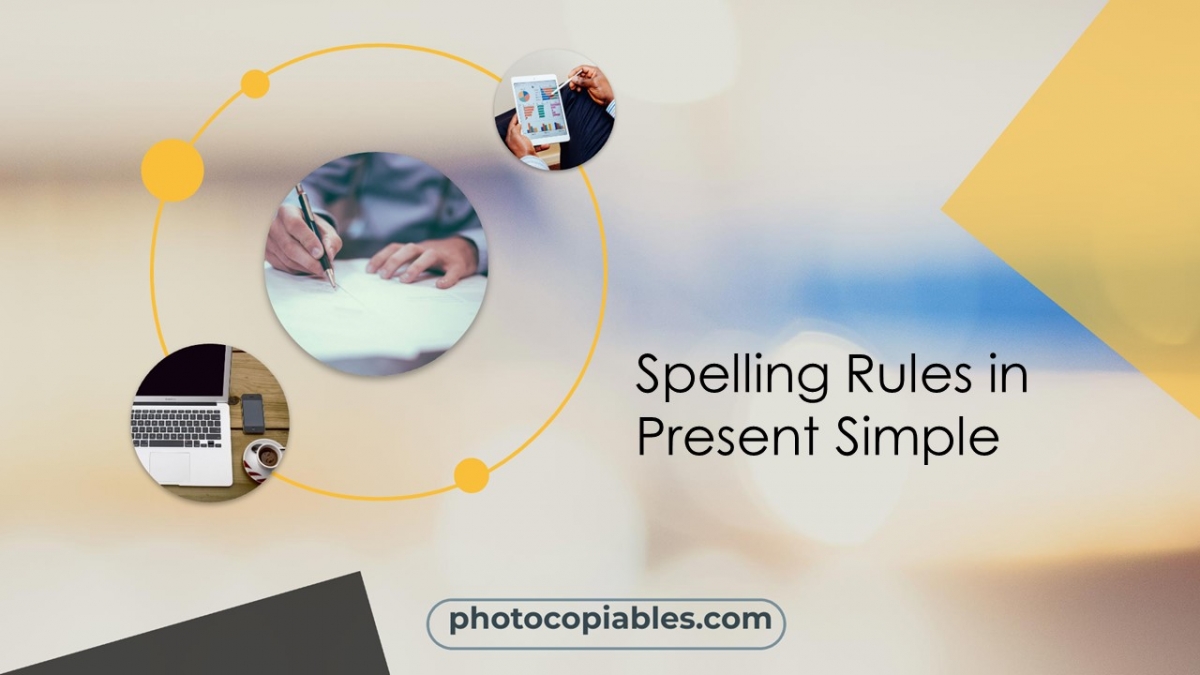1
Spelling Rules in Present Simple changes according to the ending of the verbs. We normally add -s to the verb in third singular forms (he/she/it). When we can't use -s, there are a few other spelling rules.
| Spelling Rule 1 | When the verb ends with -s we add -es
|
| Spelling Rule 2 | When the verb ends with -sh we add -es
|
| Spelling Rule 3 | When the verb ends with -ch we add -es
|
| Spelling Rule 4 | When the verb ends with -x we add -es
|
| Spelling Rule 5 | When the verb ends with -o we add -es
|
| Spelling Rule 6 | When the verb ends with -y, this -y drops and we add -ies
|
| Spelling Rule 7 | When the verb ends with -e, we only add -s
|
|
Exercise

 Verbs ending '-y' have two options:
Verbs ending '-y' have two options:




